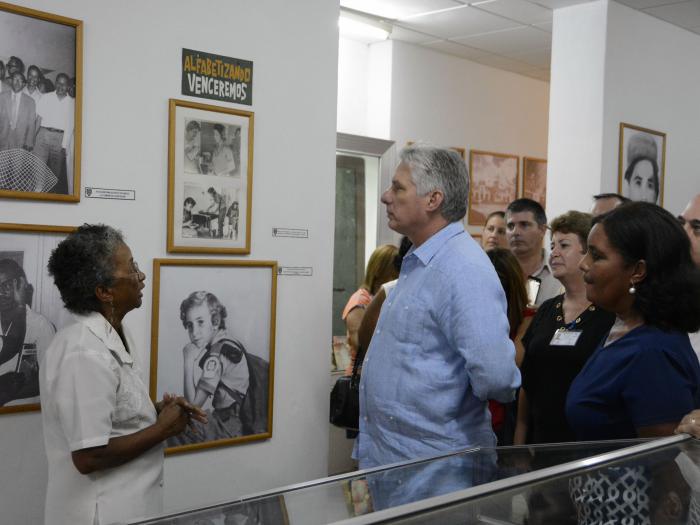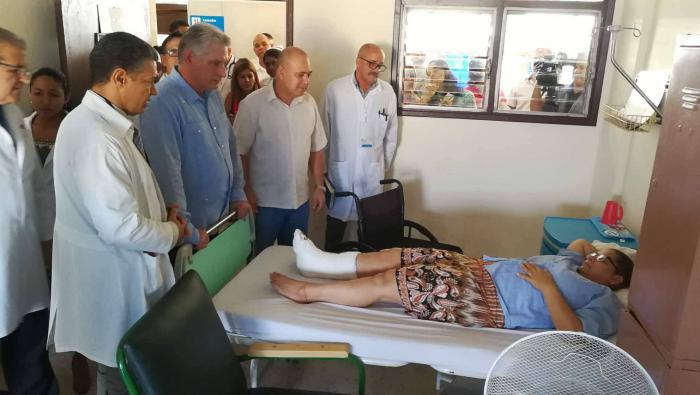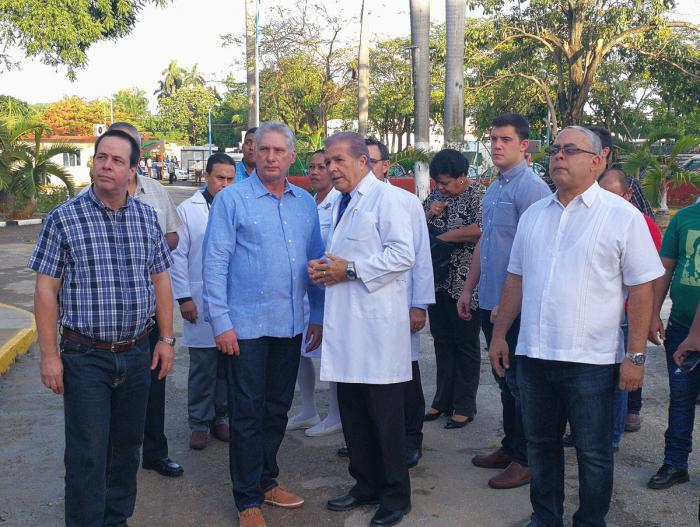
A number of objectives were very much present during the President’s tour of several medical, educational, and scientific institutions in the capital, yesterday: Keeping Cuban health care updated to meet international standards; placing science at the service of economic development; ensuring that in these times of high technology, our education is increasingly attractive; and continuing the legacy of our Comandante en Jefe.
He visited several sites where revitalization projects are underway as part of July 26 celebrations of the 66th anniversary of the assaults on the Moncada and Carlos Manuel de Céspedes Garrisons, and the 500th of Havana’s founding.

His agenda began with a tour of the Frank País International Orthopedic Sciences Complex, which is involved in a major project to renovate its facilities and services.
Accompanied by Roberto Morales Ojeda, Political Bureau member and vice president of the Councils of State and Ministers; Olga Lidia Tapia Iglesias, member of the Central Committee Secretariat; Luis Antonio Torres Iríbar, first secretary of the Party in Havana; Reinaldo García Zapata, president of the Provincial Assembly of People's Power in the capital; and other officials, Diaz-Canel learned about extensive repairs at the institution that Fidel visited 54 times.

Later, the Cuban president attended the inauguration of the Center for Advanced Studies, where nanoscience and nanotechnology are being developed.The center, a product of Fidel's visionary perspective, was created to support the introduction of nanotechnologies and provide a collaborative technology platform, according to Dr. Angelina Díaz, general director of the institution.Next, the President visited the Julio Trigo Center, affiliated with AICA Laboratories, a producer of medicines.At the plant, the only one of its kind in the country, 26 types of eye drops are produced for the country’s public health system.Díaz-Canel’s activities for the day also included a stop at the National Literacy Museum where the history of Cuba’s legendary literacy campaign is featured.He talked with teachers and workers of the nearby Enrique José Varona University of Pedagogical Sciences, and insisted on making the teaching of several subjects more attractive, especially in these times of rapidly advancing technology. Finally, the President arrived at Ramón González Coro Hospital, an institution devoted to providing comprehensive medical attention to mothers and newborns, where an extensive repair and maintenance program is underway.















